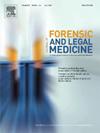医用大麻:美国、欧洲联盟和联合王国的管制审查
IF 1.2
4区 医学
Q3 MEDICINE, LEGAL
引用次数: 0
摘要
大麻含有delta-9-四氢大麻酚和大麻二酚等化合物,通常用于治疗癫痫、焦虑和慢性疼痛。医用大麻涉及将大麻用于治疗目的,例如治疗各种疾病。鉴于大麻及其副产品具有广泛的潜在药理和医疗用途,人们对开发大麻相关产品的兴趣激增。由于它具有潜在的健康危害,并且仍在临床研究中,因此需要制定一套安全使用指南。根据市场研究,目前在世界范围内建立了药用大麻开发,包括在美国(US)、欧洲联盟(EU)和联合王国(UK)。欧洲药品管理局(EMA)的目标是在考虑欧盟成员国的法规后建立指导方针。美国、欧盟地区和英国对大麻的监管存在显著差异。欧盟的每个成员国都有自己独特的一套法规。英国通过《2018年滥用药物(修正案)(大麻和许可费)条例》实施了明确的法律框架,允许出于医疗目的控制使用大麻。本研究总结了每个地区最近建立的法规,以便更清楚地理解不同的监管实践。该研究还评估了管理欧盟大麻种植和药物利用的现行法律,特别强调美国,欧盟和英国之间关于含有大麻素的药用产品的立法差异,这可能导致不同程度地获得这些产品,解决毒理学家和医生的问题。这项全面审查可能有助于决策者在全球范围内协调大麻法规。本文章由计算机程序翻译,如有差异,请以英文原文为准。
Medical cannabis: Regulatory review in United States, European Union and United Kingdom
Cannabis contains compounds like delta-9-tetrahydrocannabinol and cannabidiol, which are commonly used for epilepsy, anxiety and chronic pain. Medical marijuana involves the utilization of cannabis for therapeutic objectives, such as the management of various ailments. Given the vast array of potential pharmacological and medicinal applications of cannabis and its by-products, there has been a surge of interest in developing cannabis-related products. Because it presents a potential health hazard and is still under clinical investigation, a set of guidelines is needed for its safe use. Based on market research, medicinal cannabis development is currently established worldwide, including in the United States (US), the European Union (EU) and the United Kingdom (UK). The European Medicines Agency (EMA) aims to establish guidelines after accounting for the regulations of EU member states. There are notable differences in the regulations for Cannabis in US, EU regions and UK. Each member state in the EU has its own distinct set of regulations. The UK has implemented a clear legal framework through the Misuse of Drugs (Amendments) (Cannabis and License Fees) Regulations 2018, permitting the controlled use of cannabis for medical purposes. This study summarizes the recently established regulations in each region, allowing for a clearer comprehension of the divergent regulatory practices. The study also evaluates the present laws governing the utilization of cannabis cultivation and medicines in the EU, with particular emphasis on the differences in legislation between the US, EU and UK regarding medicinal products containing cannabinoids, which may result in varying degrees of access to these products, addressing toxicologists and doctors. This comprehensive review may assist policymakers in harmonizing cannabis regulations globally.
求助全文
通过发布文献求助,成功后即可免费获取论文全文。
去求助
来源期刊

Journal of forensic and legal medicine
MEDICINE, LEGAL-
CiteScore
2.70
自引率
6.70%
发文量
106
审稿时长
57 days
期刊介绍:
The Journal of Forensic and Legal Medicine publishes topical articles on aspects of forensic and legal medicine. Specifically the Journal supports research that explores the medical principles of care and forensic assessment of individuals, whether adult or child, in contact with the judicial system. It is a fully peer-review hybrid journal with a broad international perspective.
The Journal accepts submissions of original research, review articles, and pertinent case studies, editorials, and commentaries in relevant areas of Forensic and Legal Medicine, Context of Practice, and Education and Training.
The Journal adheres to strict publication ethical guidelines, and actively supports a culture of inclusive and representative publication.
 求助内容:
求助内容: 应助结果提醒方式:
应助结果提醒方式:


